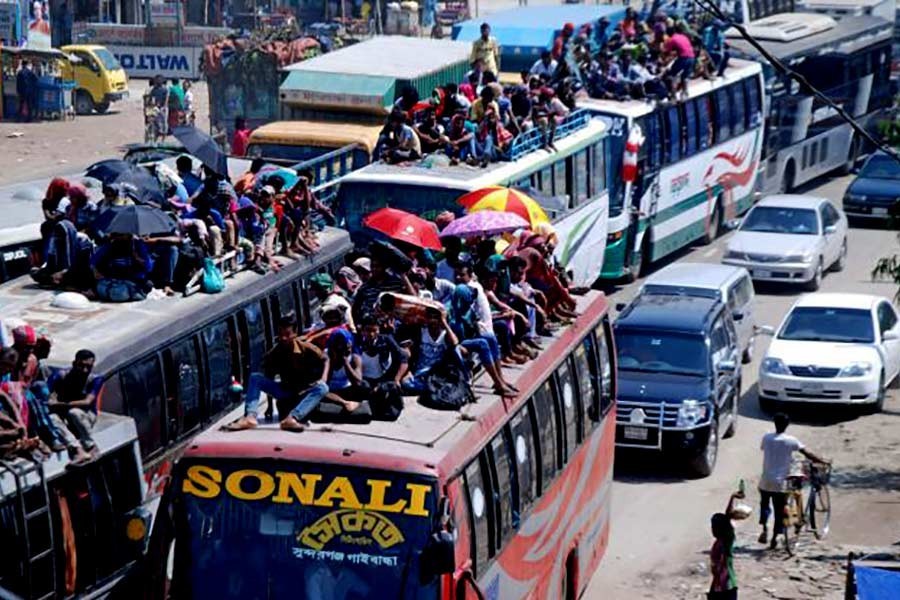Journey by of over 40 million people to and from various parts of the country, a death toll of 35 over the 12 days prior to and after the Eid and delays of up to twelve hours in train departures were some of the statistical highlights of the just passed Eid-ul-Azha holidays. If this was not enough, a 75-kilometre long tailback of vehicles between Chandra and Bhuapur stood to be the ultimate ordeal. Such gridlocks are not new; and had not the new Meghna bridge opened in time, we would have seen longer queues in the east and southeast-ward movements out of the capital city this time, too. Although the authorities in charge declared that Dhaka-bound cattle-laden vehicles were to blame, people doubted whether that was the correct picture. Cattle-laden trucks have been plying on the roads not for the first time this year. It seems no preventive steps were taken to smoothen the journey of the automobiles, or even if taken, they fell short of what was required.
At the bus stations no less a gloomy picture existed. Missing the schedule by two to three hours was mostly the case for private operators. At the launch terminals, the scene was slightly better as passengers, old and young, women and children vied for places on the vessels. Most had left on time. However, riverine journey accounts for only a small part of the total movement of people. And besides, those journeying through Sadarghat in Dhaka had to get there first through the thickest of traffic jams on city roads wasting hours.
The severest of sufferings were reserved for the railway passengers as north and south west-bound trains missed their schedule by over half a day in some cases. Except for those which go to the east and the south-east, the north and the south-west of the country again came in for the greatest hardship of all. Passengers were waiting at Dhaka's Kamalpur station for hours and hours. The Bangladesh Railways, known for its loss-making feature year in year out, looks to make up for some of the lost revenue during the two Eid celebrations. However, the result of the efforts was no less offset by the schedules having been thrown in a shambles. The case of dislodgement of compartments on way to the Bangabandhu Jamuna Bridge was mentioned. And the gradual elevation of the lines as they approach the Bridge was cited. As one part of the train faulted on the tracks, others behind it were delayed. These tracks are nearly two decades old. So pointing to the relative height of the tracks as a cause of Eid-time delay in movement is untenable. It is indeed a pity that when the festive period brings in maximum revenue, railway authorities fell short of making the most of it.
It seems that the simple flaw behind all this lies somewhere in the totality of our management skills and capabilities. Every year the same story on nearly all modes of transport reappears. Therefore, steps are needed in good time ahead of next year's celebrations. A permanent body may be formed to handle Eid-time movement. It may need external input also. And all work must start right away. People do not want to know the reasons for delays; they just want to move on fast, and inexpensively.


